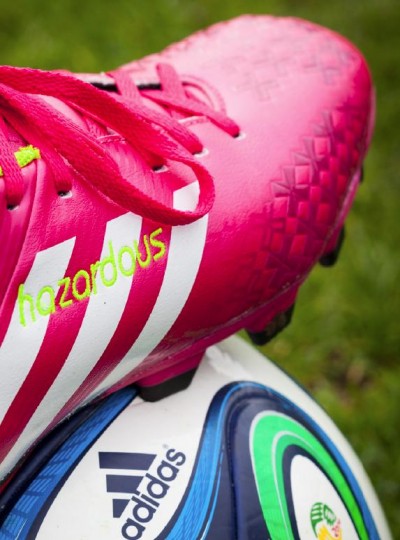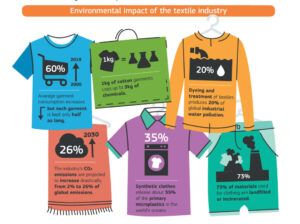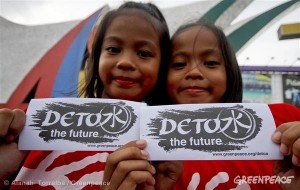Greenpeace launches another attack on sportswear brands concerning hazardous chemicals
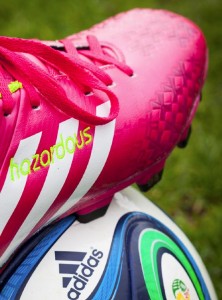 The upcoming football World Cup 2014 in Brazil is the biggest sports event in the world this year. Sportswear giants adidas, Nike and Puma are expecting big business of their merchandise. At this moment, only a couple of weeks before the big event finally takes off, Greenpeace launched another heavy attack on sportswear giants adidas, Nike and Puma by releasing a report titled “A red card for sportswear brands – hazardous chemicals found in world cup merchandise” [1],[2]. The merchandise which was examined was sold in European stores and manufactured mostly in Asia (China, Indonesia, Vietnam and a few other countries).
The upcoming football World Cup 2014 in Brazil is the biggest sports event in the world this year. Sportswear giants adidas, Nike and Puma are expecting big business of their merchandise. At this moment, only a couple of weeks before the big event finally takes off, Greenpeace launched another heavy attack on sportswear giants adidas, Nike and Puma by releasing a report titled “A red card for sportswear brands – hazardous chemicals found in world cup merchandise” [1],[2]. The merchandise which was examined was sold in European stores and manufactured mostly in Asia (China, Indonesia, Vietnam and a few other countries).
The latest report continues a series of Greenpeace studies under the Detox campaign. Earlier studies focused on PFCs in outdoor [3], surfactant residues in textiles (NPEOs)[4] , and toxic chemicals in childrenswear[5]. Greenpeace, the international NGO, even introduced a new kind of fashion catwalk[6] wherein adidas and Nike have been blacklisted as “greenwashers”. Around the same time when Greenpeace launched their Detox campaign, leading fashion brands have established the ZDHC (zero discharge of hazardous chemicals) programme aiming to eliminate hazardous chemicals from their supply chain by the year 2020. Many people say ZDHC was a response to the Detox campaign although this is not officially acknowledged.
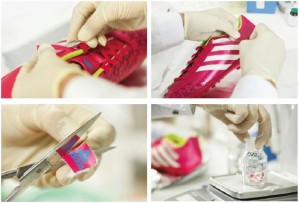 The latest Greenpeace report is based on examinations of independent analytical laboratories which found various hazardous chemical such as PFCs (perflourinated hydrocarbons), NPEO (nonophenyl ethoxylates) and DMF (dimethylformamide) in football boots, goalkeepers gloves and football shirts.
The latest Greenpeace report is based on examinations of independent analytical laboratories which found various hazardous chemical such as PFCs (perflourinated hydrocarbons), NPEO (nonophenyl ethoxylates) and DMF (dimethylformamide) in football boots, goalkeepers gloves and football shirts.
Almost all of the 33 tested products in the current World Cup collections were contaminated with harmful nonylphenol or perfluorinated chemicals. For example, the adidas football boot “Predator” was found to contain a peak of 14.5 micrograms per square meter of the toxic PFOA (perfluorooctanoic acid) which is far exceeding the brands own restricted substance lists limit of 1 microgram per square meter. Even the examined official adidas World Cup ball “Brazuca” contained 20 milligrams per kilogram of hormonally active nonylphenol, according to Greenpeace.
Adidas has refuted Greenpeace claims and stressed the point that legel limits were not exceeded[7]. Says Sabrina Cheung, corporate public relation director of adidas Group Greater China “None of the tested products pose any health risk to consumers. All of the published results and concentrations fully meet all legal requirements.”
Looking at the latest Greenpeace revelations it seems the ambitious targets of ZDHC and Detox are obviously far away from implementation. Not even the slightest progress is accountable. The rate of articles found to be contaminated with hazardous chemicals is still shockingly high, despite ZDHC and other commitments, building up on earlier findings of the same and other brands. The progress in ZDHC is seen very critical by many people, not only by Greenpeace have repeatedly questioned the seriousness and speed of the approach. We have covered this story before and therefore we are not entirely surprised[8].

“Despite their Detox commitments, Nike and adidas are failing to tackle their toxic addiction. On behalf of the players, the fans and the local communities affected by toxic-water pollution we urge them to come clean by publicly disclosing the release of all hazardous chemicals and publishing a precise PFC phase-out plan,” summarizes Greenpeace campaigner Manfred Santen.
So far, the public awareness for detox issues in the fashion apparel market was muted, despite all previous Greenpeace activities. But this may change any time. In Germany, the renown news magazine Spiegel, among others, picked up the story very soon[9].
References:
[1] Greenpeace investigation reveals toxic scandal with World Cup merchandise
[2] Greenpeace: A red card for sportswear brands
[3] Greenpeace puts pressure on outdoor brands to phase out fluorocarbon chemistry
[4] The risks and alternatives of APEO and NPEO in textiles
[5] Greenpeace puts the spotlight on hazardous chemicals in childrenswear
[6] The Detox Catwalk – Greenpeace launches a new type of fashion brand catwalk
[7] Adidas refutes Greenpeace’s product test results
[8] Slow progress in the Greenpeace detox campaign
[9] Adidas, Nike, Puma: Greenpeace findet Gift in WM-Kollektionen

